Sichuan Tibet Highway - Southern and Northern Routes
- Beatrice
- Last Updated : 03/15/2024
The Sichuan Province is adjacent to the Eastern part of Tibet which makes Tibet accessible by road, traversing through the Sichuan-Tibet Highway. This Highway has been divided into two distinct parts, one of which is known as the Southern Route and the other road is known as the Northern Route.
The southern route of Sichuan-Tibet Highway belongs to part of G318 National Highway, which spans from Shanghai to Zhangmu. The northern route of Sichuan-Tibet Highway belongs to part of G317, which starts from Chengdu to Nagqu. The southern route has a span of 2149 kilometers, whereas the Northern route which is relatively a little longer than the Southern Route is 2293 kilometers in length. Since the southern route is shorter and the altitude is lower than that of the northern route, most people choose the southern route.
The Sichuan Tibet Highway
The Chengdu-Lhasa Highway, also called Sichuan-Tibet Highway for short, is a modern upgrade of the ancient Sichuan-Tibet Highway. It starts from Chengdu, the capital of Sichuan Province in the east, and ends at Lhasa, the capital of Tibet in the west. It's part of the sections of National Highway 318, 317, 214, and 109. It is the most difficult road in China, divided into north and south routes. Some connecting lines in the middle of the north-south routes are generally classified as part of the Sichuan-Tibet Highway.
As one of the major roads in and out of Tibet besides Qinghai Tibet Railway, this highway was inaugurated and was made functional on 25th December 1954. This highway is vital to the progress of Eastern Tibet, by promoting the economic development of Eastern Tibet. This road is known to be the best option to reach Tibet if you are coming from Sichuan or any other Southern Chinese Province by the overland route.
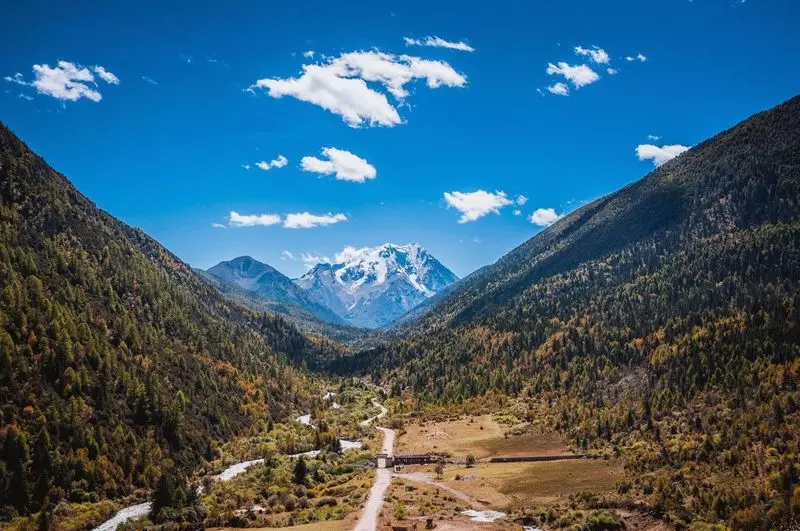
The Southern Route via G318
The Southern Route of the Sichuan-Tibet highway spans 2,149 kilometers and cuts across vast and beautiful landscapes. It is the most beautiful and wonderful part of G318 National Highway. The scenery along the way is ever-changing and colorful. Driving on the road, you can experience the wonderful feeling of "varied weathers across mountains, four seasons in a day". It is also recognized as the most precipitous and difficult road in China. The part through the Hengduan Mountains in the eastern Tibetan Plateau is the most complex and unique alpine mountain valley in the world. It is called "the mind in heaven, the body in hell".
The southern route starts from Chengdu and passes through Ya'an city and Kangding county, Yajiang County, Litang County, Batang County, Markham County and Zogong County in the Tibet Autonomous Region, and then meets the northern route at Bangda, and then passes through Paksho County, Bomi County, Nyingchi County, Gongbujiangda County, Medro Gongkar County and Taktse County to Lhasa. There are countless scenic spots along the Sichuan-Tibet Highway by car, the majestic Erlang Mountain, the roaring Dadu River, the Happyland Kangding, the paradise for photographers - Xindu Bridge, the world’s high city Litang, Maoya Prairie, Batang’s Xianzi Dance, peaceful Ranwu Lake, as well as Draksum-tso Lake, Changqingqing Keer Temple, Giant Berlin, Niyang River, etc. Everything can let people stop and intoxicate.
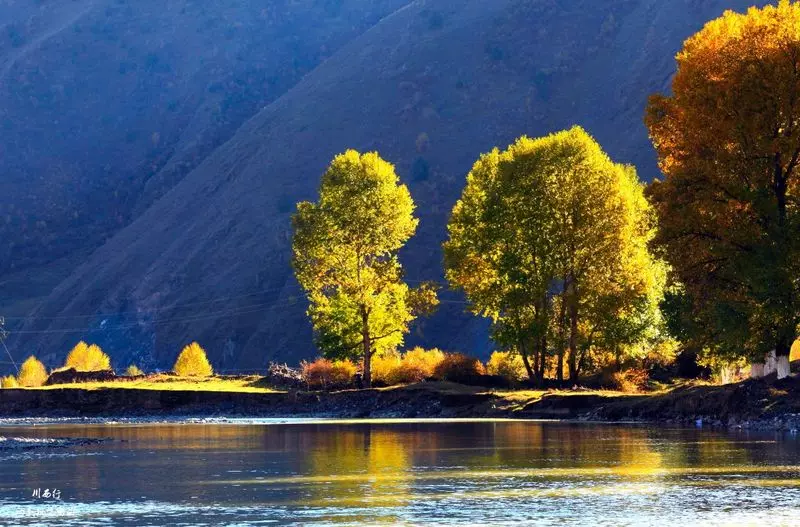
Route Mileage:
Chengdu→ 147KM→ Ya'an→ 168KM→ Luding→ 49KM→ Kham→ 75KM→ Xinduqiao→ 74KM→ Yajiang→ 143KM→ Litang→ 165KM→ Batang→ 36KM→ Zubalong→ 71KM→ Mangkang(Markham County)→ 158KM→ Zogong → 107KM→ Bangda→ 94KM→ Paksho→ 90KM→ Ranwu→ 129KM→ Bomi→ 89KM→ Tongmai→ 127KM→ Nyingtri→ 19KM→ Bayi→ 127KM→ Gongbujiangda→ 206KM→ Medro Gongkar→ 68KM→ Lhasa
Recommended time: 8 ~ 10 days.
Accommodations: You have multiple choices for the standard of accommodation along the way. The hotels range from ordinary characteristic inns or Tibetan dwellings to modern hotels. However, the degree of facilities cannot be compared with that of the big cities, and some hotels cannot guarantee 24-hour hot water supply or an all-day floor heating supply.
√ Sichuan Tibet Hwy 4WD Tour of the southern route
Here's a video of the Southern Route for watching more details.
The Northern Route via G317
Compared with the southern line, the northern line is mostly pastoral areas (such as the Nagqu area), with higher elevation, sparser population, and more primitive and magnificent scenery. It's 2,412 kilometers in length, an arduous but full of Tibetan cultural stories. Along the way, towering snow-capped mountains, wild rushing rivers, broad and beautiful grasslands, white and beautiful tents, prayer flags fluttering in the wind, and magnificent temples not only shock your vision but also your soul.
The “Great Northern Route” starts from Chengdu via Dujiangyan, passes through Miyaluo Nature Reserve, Wenchuan, and arrives at Malcolm. After entering Ganze Prefecture, it passes through Luhuo, Ganzi, and Derge across the Gangga Jinsha River Bridge into Tibet, then passes Gyamda, Chamdo(Qamdo), Rioche, Bachen, Sog (Suo) county and Nagqu to Lhasa. The northern Sichuan-Tibet Highway is a string of Seda La Rong Wuming Institute of Buddhism, Yaqing Temple, Dege Sutra-Printing House, Jiangda Wala Wuming Buddhist Institute, and Changdu Qiang Balin Temple, Babang Temple - the main temple of the Kagyu School of Kham, Chajma Hall on the Tang-Pan Ancient Road, Nyingma Sect's Baiyu Temple, Gelug Sect's Ganzi Temple, Dingqing Bon religion’s oldest temple - Triten Norbutse, etc. The Noth Route is a road where religious cultures gather. The northern Sichuan-Tibet Route is very religious and is a good tourist route for understanding Tibetan culture.
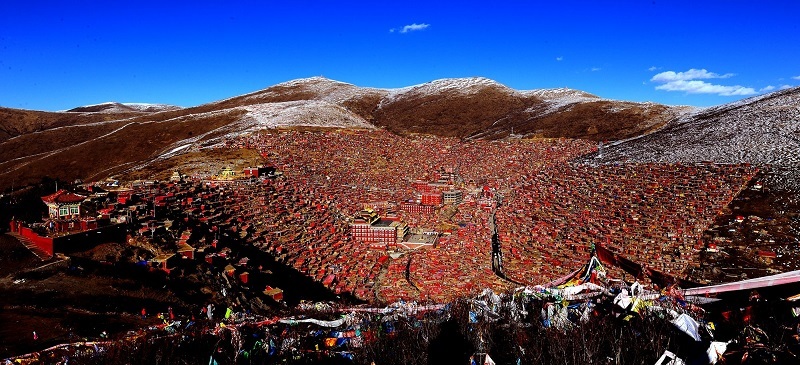
Route Mileage:
Chengdu→ 48KM→ Dujiangyan→ 335KM→ Danba→ 160KM→ Daofu(Dawu County)→ 72KM→ Luhuo→ 97KM→ Ganze→ 106KM→ Manigango→ 112KM→ Derge→ 24KM→ Jinsha RiverBridge→ 85KM→ Gyamda→ 228KM→ Chamdu(Qamdo)→ 290KM→ Tengchen→ 232KM→ Bachen→ 260KM→ Nagqu→ 164KM→ Damxung→ 153KM→ Lhasa
Recommended time: at least 12 days. The itinerary can not be arranged too tightly.
Accommodation: The accommodations on the northern Sichuan-Tibet route are mainly concentrated in crowded towns, such as Xinduqiao, Luhuo, Ganzi, Chamdo(Qamdo), Nagqu, etc. Compare with the hotels of the same level in the big cities, the accommodation facilities are very simple even in star-rated hotels. Please prepare accordingly before traveling.
The Difference Between the Southern and Northern Routes
Different Itinerary
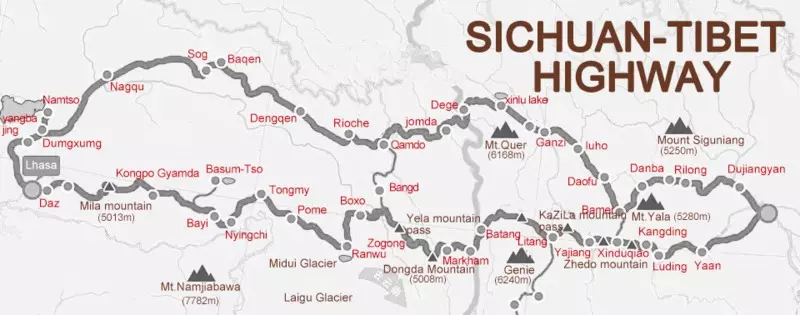
318 Southern Route: Departing from Chengdu, passing Ya'an and National Highway 108, crossing Erlang Mountain to the west, crossing the upper reaches of Dadu River, Yalong River, Jinsha River, Lancang River, and Nu River along the way, passing Yajiang, Litang, Batang Zhubalong Jinsha River Bridge entered Tibet, and then arrived in Lhasa via Mangkang, Zogang, Bangda, Basu, Ranwu, Bomi, Nyingchi, Mozhugongka, and Dazi. The total length is about 2116km.
317 Northern Route: Starting from Chengdu, going north to Yingxiu Town and move west, passing through Wolong Nature Reserve, Guanyin Bridge, and reaching Seda. After entering Ganzi, pass Daofu, Luhuo, Ganzi, Dege, cross the Gangga Jinsha River Bridge and enter Tibet, and then pass Jiangda, Qamdo, Leiwuqi, Baqing, Suoxian, Nagqu to Lhasa. The total length is about 2412km.
Different Scenery
G318 Southern Route: Mainly known for its natural scenery. Along the way, there're majestic mountains and valleys, endless grasslands, snow-capped meadows, as well as prayer flags, Mani Stones, Tibetan monasteries, and colorful folk customs. You will experience "Photographers' paradise" Xindu Bridge, “Bodhisattva's favorite place” Tagong grassland, 72 Turns of Nujiang River, crystal blue Ranwu Lake, the deepest canyon on earth - Yarlung Zangbo River Grand Canyon, "Dragon King's Valley" Lulang Forest, fabulous Draksum-tso Lake, and so on. The travel and photography fans call it "golden route".
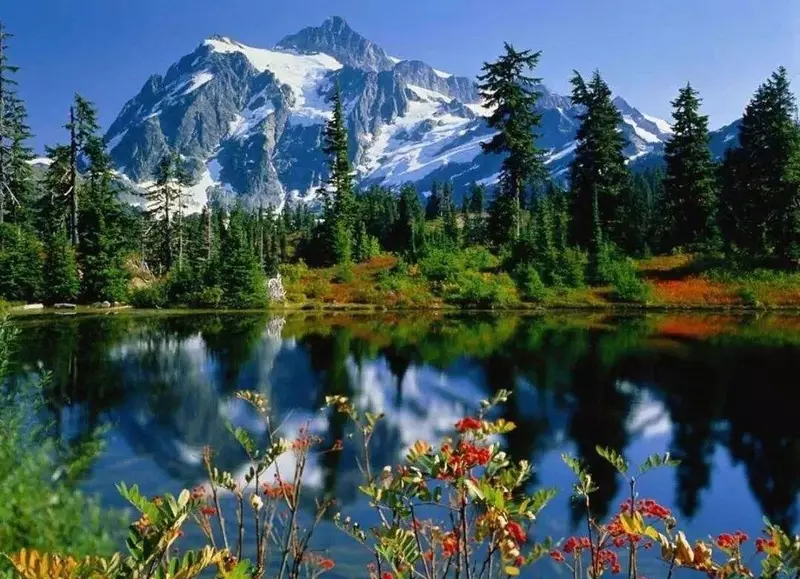
G317 Northern Route: Mainly based on cultural landscapes. Along the way, you will enjoy both natural scenery and cultural relics, the "Oriental Alps " Siguniang Mountain(The Four Girls Mountain), “ancient country of thousands of watchtowers” Danba, "Buddhist paradise jade pool" Xinhailu, “the highest and most dangerous mountain in Sichuan Tibet Highway” Chola mountain, the "Little Potala Palace" Zandan Monastery, “the world's highest lake” Namtso, and so on.
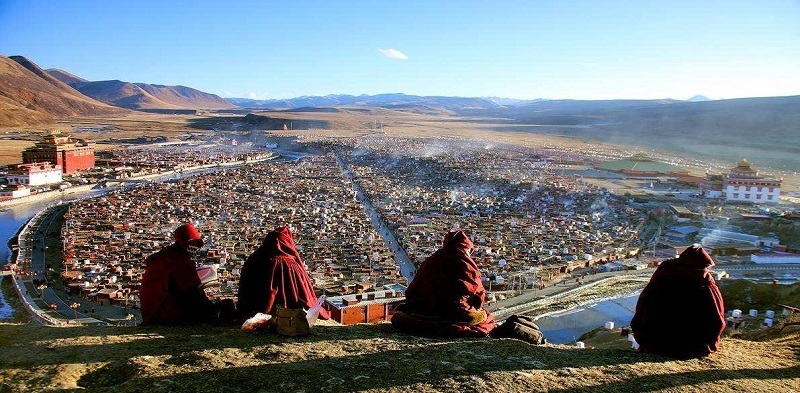
Different Road Conditions
G318 Southern Route: The whole road sometimes runs along the river in the canyon, sometimes runs on the grassland, and sometimes on the winding mountain road. There's a large altitude difference from 2000 meters to 4000 meters above sea level but the overall condition is still good.
G317 Northern Route: Compared with the Southern route, this route has a slightly higher elevation. Passing mostly pastoral areas with high altitude, sparsely populated, relatively primitive, and difficult to drive, so the journey is more exciting and thrilling.
In general, The road conditions in Sichuan are better than in Tibet, but now the Sichuan-Tibet Highway is all in the process of blackening, and it will not take long for it to be all asphalt roads.
Best Time to Go
Regardless of the G317 Nothern Route or G318 Southern Route, the best time to travel through the Sichuan-Tibet Highway is from May to June and September to October. The Sichuan-Tibet line is one of the hottest tourist routes in summer due to its charming scenery and challenging conditions. If you travel in the rainy season like July and August, you need to arrange more time, due to occasional mudslides and landslides. No matter which route you choose, the Sichuan-Tibet Highway is a place worth visiting.
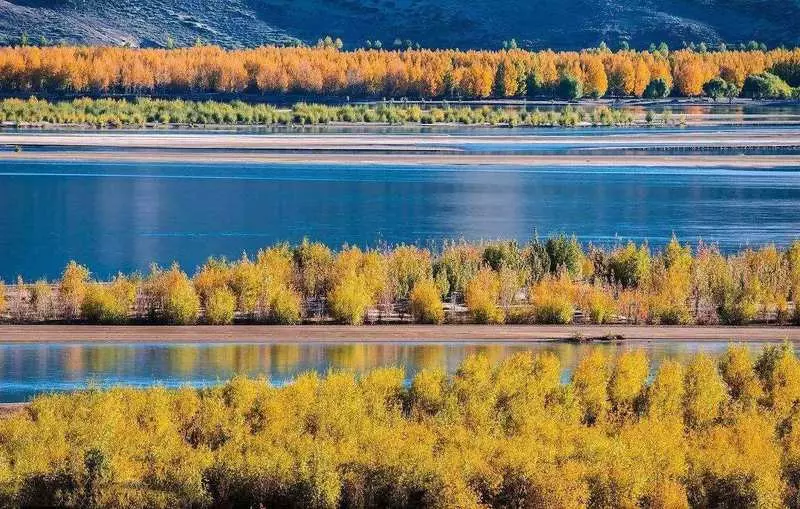
Conclusion
There's no comparison between the Southern route and the Northern route, as different people have different preferences. If you just want to enjoy the landscape, you may choose the Southern route. If you want to feel the Buddhist atmosphere, you can choose the Northern route. The best way is to complete both routes so that you can experience the natural scenery and cultural customs.
Note:
If you plan to visit Lhasa from Chengdu, it would come as an advantage if you avail of the services of a Travel Agency to Tibet. The agency will make your travel smoother and hassle-free. If you are looking for a Travel Tour Agency, you can reach us via phone call or email and we will make your travel from Chengdu to Lhasa the best travel experience of your life.
Email response within 0.5~24 hours.


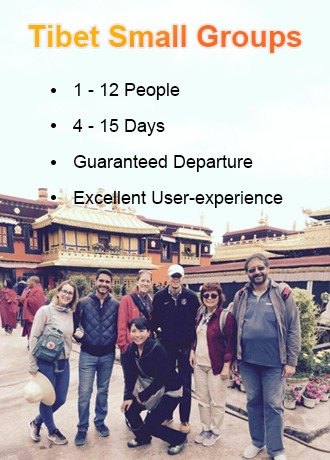
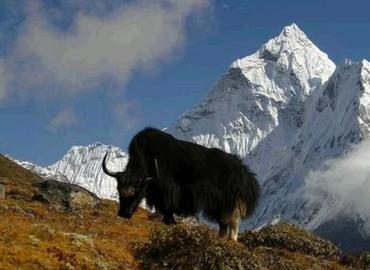
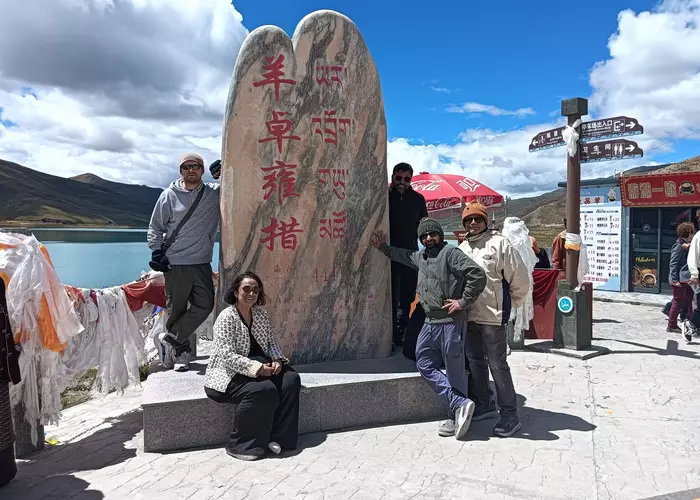
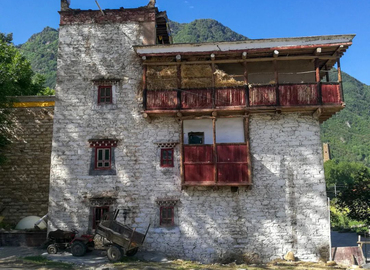
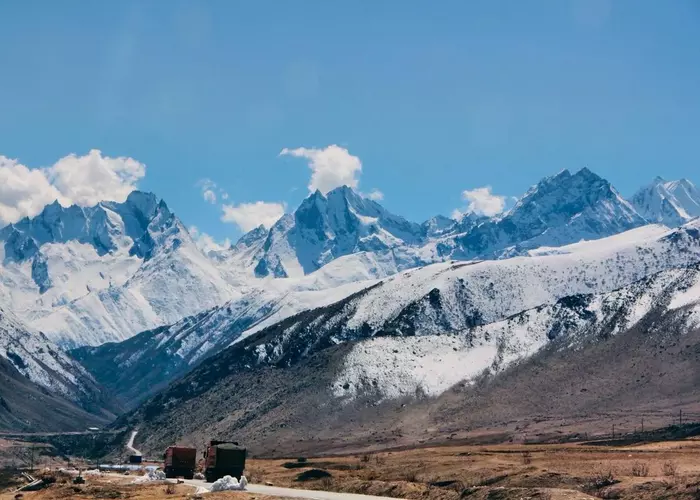

Typically Asked Questions from Our Clients
Asked by LEE ***
Hi,
I would like to book a G318 Southern Route to Llasa, Tibet tour for 2 in June 2025.
Is this tour available?
Dear LEE***,
We can arrange the G318 Southern Route from Chengdu to Lhasa for you in June 2025.
Asked by SARA***
My husband and I met 16 years ago at EBC in Nepal. Our kids are 7, 9, 11, and 12. We’d be interested in any activities you’d recommend including possibly western China. We have a month total to travel but won’t spend the whole time in Tibet
Dear Sar****,
We can arrange your western Sichuan tour this July. Here's the recommended itinerary for you. You can see Daocheng Yading, the last Shangri-La, which is famous for its well-preserved natural scenery and the Tibetan culture, known as the last piece of pure land on the blue plane; the watchtowers in Danba, which have existed for more than 1,000 years and it is a miracle for them to survive so many earthquakes; Jiaju Tibetan village, the most beautiful village in China; and Mt. Siguniang, known as the East Alps. Almost all essences of western Sichuan are included.
Pease let me know your idea.
Day 2 Chengdu-Kangding
Day 3 Kangding-Yajiang
Day 4 Yajiang-Litang-Daocheng
Day 5 Daocheng-Yading
Day 6 Yading-Daocheng-Yajiang
Day 7 Yajiang-Tangong-Danba
Day 8 Danba-Rilong
Day 9 Rilong-Mt. Sigunliang
Day 10 Rilong-Chengdu
Day 11 Depart from Chengdu
Looking forward to hearing from you!
Asked by Thom***
Hello, I have ssen your overland tours from Chengdu to Lasa. Is there a way to have an individual tour, leaving Chengdu, but going to Changdu instead of Lasa and spending some time in Changdu, incl. 孜珠寺. Is such a tour possible in late December? Weixin: tmooser Thank you, ThM
Dear Thomas, Currently, the Sichuan Tibet overland tour is prohibited by the government. And Chamgdu also keeps closed to foreign tourists. However, we can arrange your Tibet tour to other destinations beyond Lhasa, such as Shigatse(EBC), Nyingchi, Lhoka(Shannan), etc. Touring in Tibet in late December is applicable. I have added you on Wechat:)
Asked by Deni***
Hi,
I am french expatriate in Guiyang and I plan to go to TIbet by the G318 from Guiyang via Chengdu. I have my car and chinese driver license and I would like to know if it is possible and what do I need from local authorities. I understand that maybe I will need a guide from Batang to Lhasa and maybe to come back.
Could you give me your advice and recommendations?
Sichuan Tibet Highway was banned by the authority in 2019. Ever since that, they didn't issue Tibet Travel Permit for tourists coming from that route. So currently, there're only two ways to get to Tibet for international tourists - by flight and by train.